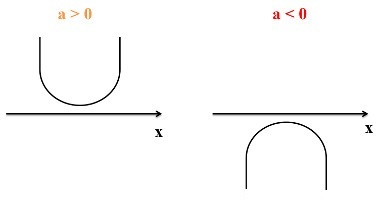Today we present for you some tips and tricks that can make a difference for those who intend to take the Enem. It is known that the Exam contains many questions to be resolved in a few hours. Thus, the more time the candidate saves on the easier issues, the more time he will have to focus on those that need a little more attention.
Most questions from Math and Physics of Enem requires that the student has knowledge of some specific content and other fundamental content that must be used in the resolutions. Thus, there is no doubt that content like equations, sign game, addition, multiplication and division, among others, they fall in practically all questions of Mathematics and Physics of Enem.
Let's go to the tips?!
→ sign game
Instead of memorizing all the rules for multiplication between positive and negative numbers, why not learn the rule?
“Equal signs, positive result”
This is the same as saying that if the signs are different, the multiplication result will be negative.
Watch out! This rule is only valid for multiplication. No applying it to additions and subtractions. The rule for addition is different:
With sequal ends, add and keep them.
With different signs, subtract and keep the sign of the largest modulus.
Notice that module is when the signal is ignored. For example, between 8 and – 9, the number that has the largest modulus is – 9, although 8 is larger in a general sense.
→ Multiplication by power of 10
When multiplying any number by a power of 10, just think of the comma. The number of decimal places it will shift to the right is equal to the exponent of the power of 10 by which the number is being multiplied. Watch:
4,58·1000
4,58·103
4 580,0
Notice in the example above that the comma has shifted three decimal places. In the case of division by a power of 10, the comma must shift to the left.
The second case is where there is no comma. To calculate this type of multiplication, just put zeros at the end of the number. The amount of zeros is equal to the exponent of the power of 10. Watch:
458·1000000
458·107
4580000000
→ Multiplication by multiple of 10
When the numbers multiplied are multiples of 10, the procedure is similar to the previous one. However, separate the numbers into two parts: start and zeros. Multiply the starting numbers and put exactly the same amount of zeros they have in the final result. Example:
2800·32000
28·32 = 896, therefore:
2800·32000 = 89600000
Watch out! If there are zeros between the starting numbers, they won't stop at the end of the result. Watch:
Do not stop now... There's more after the advertising ;)
101·208
21008
→ Multiplication by distributive property
Joining this topic to the previous one, with a little training, it is possible to carry out many very difficult divisions “in the head”. To use this property in multiplication, decompose one of the numbers into multiples of 10, multiply all the factors obtained by the other number and add up the results. Watch:
325·22
325·(20 + 2)
You can perform these calculations “in your head”. Note that we used the previous topic to make the calculation easier:
6500 + 650
7150
This simplification can be extremely useful to not waste time with long multiplications on Enem day. Note that we transform a hard multiplication into two other easy multiplications which, added together, give the same result.
→ trigonometric table
THE table below is always explored in some questions of Enem's Trigonometry. However, the results present in it are rarely given in the exercise. Therefore, it is important that the candidate has this in mind before going to the test sites.

To learn this table, we suggest the following song:
“One two Three.
Three two one...
all over two
The one just doesn't have root.”
Note that this song can be used step-by-step to build this table for sine and cosine values. Tangent values can be obtained by dividing sine by cosine.
→ Addition of arcs
O sine of the sum of two angles it is not obtained just by summing these angles and calculating the sine value. There are formulas for adding arcs. The most recurrent of these is the one involving sine. To memorize it, we can use the beginning of Song of Exile, by Gonçalves Dias:
“my land has palm trees
where the thrush sings
sine a, cosine b
sine b, cosine a”
This should be transcribed as follows:
sin (a + b) = sena·cosb + senb·cosa
sen (a – b) = sena·cosb – senb·cosa
→ simple interest
Problems often arise involving simple interest in Enem. The formula for calculating simple interest is as follows:
J = C·i·t
J = interest; C = capital; i = rate and t = time.
To memorize this formula, use the following trick:
“Jota City”
Note that this trick is precisely the pronunciation of the formula, which makes it impossible to forget it. Also note that the formula for compound interest can fit a similar trick:
"M-city"
The formula for compound interest is as follows:
M = C(1 + i)t
Note that compound interest is not derived directly from this formula, but rather from the difference between Amount (M) and Capital (C):
M = C + J
J = M - C
By Luiz Paulo Moreira
Graduated in Mathematics
Would you like to reference this text in a school or academic work? Look:
SILVA, Luiz Paulo Moreira. "Math tricks and tips for Enem"; Brazil School. Available in: https://brasilescola.uol.com.br/matematica/macetes-dicas-matematica-para-enem.htm. Accessed on June 27, 2021.



